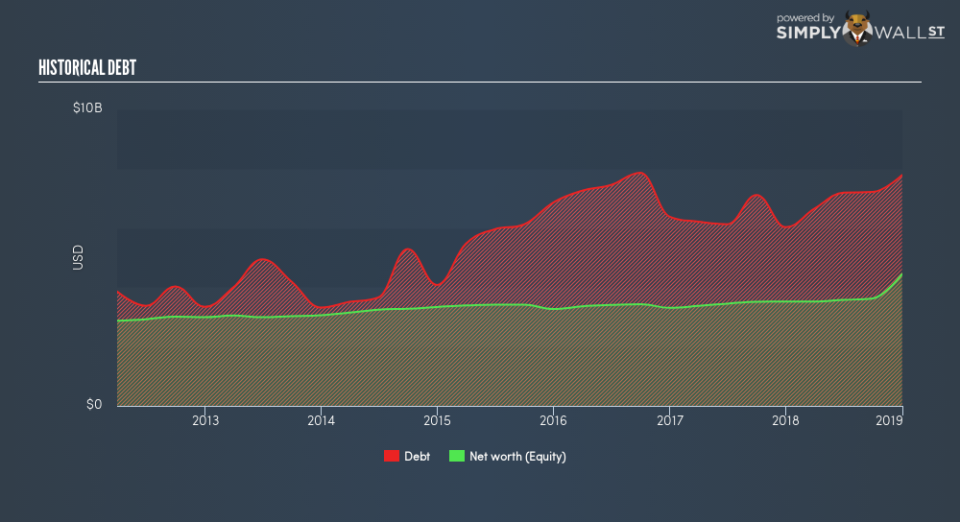Can BOK Financial Corporation (NASDAQ:BOKF) Survive The Next Financial Crisis?

Want to help shape the future of investing tools? Participate in a short research study and receive a 6-month subscription to the award winning Simply Wall St research tool (valued at $60)!
BOK Financial Corporation’s (NASDAQ:BOKF) profitability and risk are largely affected by the underlying economic growth for the region it operates in US given it is a small-cap stock with a market capitalisation of US$6.0b. A bank’s cash flow is directly impacted by economic growth as it is the main driver of deposit levels and demand for loans which it profits from. Following the Financial Crisis in 2008, a set of reforms termed Basel III was enforced to bolster risk management, regulation, and supervision in the financial services industry. These reforms target banking regulations and intends to enhance financial institutions’ ability to absorb shocks resulting from economic stress which could expose banks like BOK Financial to vulnerabilities. Unpredictable macro events such as political instability could weaken its financial position which is why it is important to understand how well the bank manages its risk levels. High liquidity and low leverage could position BOK Financial favourably at the face of macro headwinds. A way to measure this risk is to look at three leverage and liquidity metrics which I will take you through today.
Check out our latest analysis for BOK Financial
Why Does BOKF’s Leverage Matter?
Banks with low leverage are exposed to lower risks around their ability to repay debt. A bank’s leverage can be thought of as the amount of assets it holds compared to its own shareholders’ funds. Though banks are required to have a certain level of buffer to meet its capital requirements, BOK Financial’s leverage level of 8.56x is very safe and substantially below the maximum limit of 20x. This means the bank exhibits very strong leverage management and is well-positioned to repay its debtors in the case of any adverse events since it has an appropriately high level of equity relative to the debt it has taken on to remain in business. Should the bank need to increase its debt levels to meet capital requirements, it will have abundant headroom to do so.
How Should We Measure BOKF’s Liquidity?


Due to its illiquid nature, loans are an important asset class we should learn more about. Normally, they should not exceed 70% of total assets, which is consistent with BOK Financial’s state given its ratio of 56%. This is a reasonable ratio and suggests that slightly over half of the bank’s total assets are tied up in the form of illiquid loans, striking an appropriate balance between liquidity and interest income.
Does BOKF Have Liquidity Mismatch?
BOKF profits by lending out its customers’ deposits as loans and charge an interest on the principle. Loans are generally fixed term which means they cannot be readily realized, yet customer deposits on the liability side must be paid on-demand and in short notice. The disparity between the immediacy of deposits compared to the illiquid nature of loans puts pressure on the bank’s financial position if an adverse event requires the bank to repay its depositors. Compared to the appropriate industry loan to deposit level of 90%, BOK Financial’s ratio of over 85% is sensibly lower and within the safe margin, which positions the bank cautiously in terms of liquidity as it has not disproportionately lent out its deposits and has retained an apt level of deposits.
Next Steps:
BOK Financial ticks all the boxes for operational prudency in terms of liquidity and leverage. These factors often sideline next to other fundamentals but are equally important to consider as part of the investment thesis. The bank’s favourable liquidity and leverage position exposes it to less risk when it comes to repaying financial obligations, in particular, in the case of an adverse macro event. We’ve only touched on operational risks for BOKF in this article. But as a stock investment, there are other fundamentals you need to understand. Below, I’ve compiled three pertinent aspects you should further examine:
Future Outlook: What are well-informed industry analysts predicting for BOKF’s future growth? Take a look at our free research report of analyst consensus for BOKF’s outlook.
Valuation: What is BOKF worth today? Has the future growth potential already been factored into the price? The intrinsic value infographic in our free research report helps visualize whether BOKF is currently mispriced by the market.
Other High-Performing Stocks: Are there other stocks that provide better prospects with proven track records? Explore our free list of these great stocks here.
To help readers see past the short term volatility of the financial market, we aim to bring you a long-term focused research analysis purely driven by fundamental data. Note that our analysis does not factor in the latest price-sensitive company announcements.
The author is an independent contributor and at the time of publication had no position in the stocks mentioned. For errors that warrant correction please contact the editor at editorial-team@simplywallst.com.

